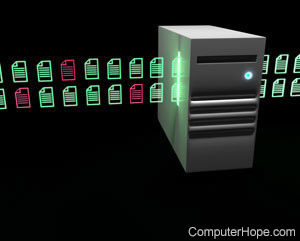Pumping

Computer pumping refers to how much data can transmit on each clock cycle. With earlier computers, all buses transmitted only one bit of data per cycle. New computer buses are double-pumped or even quad-pumped, which means that two or four bits of data are sent for every clock cycle.
There are different types of buses on the motherboard and not all buses are dual or quad-pumped buses. Usually, when referring to pumping, you are discussing either the AGP (accelerated graphics port), FSB (front-side bus), or the memory bus. A computer with quad pumping could still have one or more buses that only transmit one bit of data per cycle.
Quad pumped might also be called as QDR (quad data rate) and QPB (quad pumped bus).
How does pumping work?
With double pumping, the motherboard chipset detects a signal on the rising and falling edges of the clock, hence doubling the transfer rate. With quad pumping, two voltage levels are detected in addition to utilizing the rising and falling edges of the clock cycle, which quadruples the transfer rate. For example, you may see your FSB (front-side bus) speed displayed as 800 MHz, but it's a 200 MHz FSB that's being quad-pumped (200*4=800 MHz).
